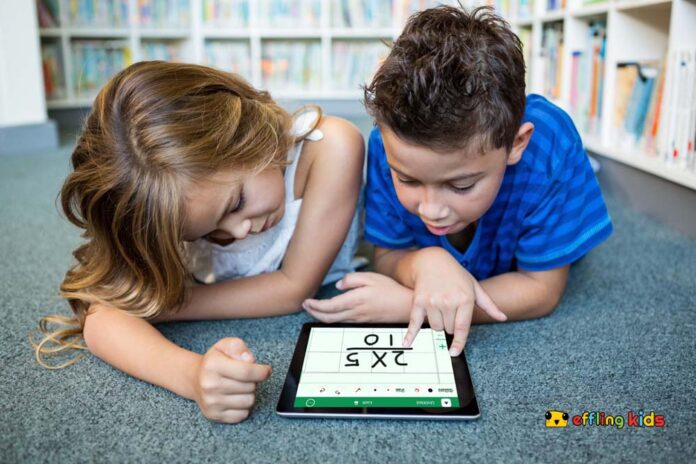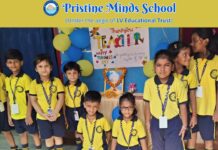Today’s kids live in a fast-paced, tech-filled environment. They use digital devices, including smart TVs, phones, computers, and voice assistants, daily. Technology’s rapid acceptance worries people about too much computer time, but it also offers a chance to improve things: teaching digital literacy in preschool.
Digital literacy goes beyond gadget use. Knowledge of digital tools, their evaluation, and their responsible and helpful use is also required. Technology is becoming more crucial in schools worldwide. Therefore, kids should learn these abilities early on.
Why Start Digital Education in Preschool?
Preschool develops children’s minds, feelings, and social skills. At this age, children experiment, copy, and play to learn. These are good times to educate youngsters on how to use technology properly since their brains learn quickly.
Digital platforms are ideal for learning because youngsters love vivid graphics, exciting sounds, and group games. We teach preschoolers basic skills in a way that works for them using digital stories, interactive games, and educational applications.
Starting young helps your kids perceive technology as a tool for learning, not simply entertainment. This balances screens that make, solve, and discover.
Transforming Screen Time Into Learning Time
Fear of passive computer time is one of the main reasons why kids shouldn’t use technology when they are young. A lot of the time, parents and teachers worry that kids will waste hours watching cartoons, scrolling through reels, or doing other useless activities. These concerns are valid, but the solution is to use screen time wisely.
With proper creative educational tools like Effling Kids and Khan Kids Academy, children can actively learn and practice. They don’t zone out; they learn Hindi, English, numbers, and engage in creative arts and more, follow directions, and receive feedback. These hobbies help develop kids both cognitively and physically.
Educational apps teach focus, patience, and goal-oriented behaviour, while reels and cartoons teach instant rewards and short attention spans. These digital games are meant to teach skills like writing, counting, finding patterns, and understanding feelings in a way that feels like fun.
Building Core Skills Digitally
Digital learning in preschool doesn’t take the place of play or learning by doing; it adds to those activities. Digital tools can help students learn more outside of school by letting them practice, make things their own, and get information quickly when they need it.
Kids can go over things more than once without being judged. They can trace letters until they feel comfortable moving their hands or listen to the same sound over and over until they can recognize it. Innovative learning tools can often change to fit the child’s speed, giving them a personalized experience that boosts their confidence and helps them become more independent.
Beyond academics, these tools enhance:
- Fine motor skills through touchscreen engagement.
- Developing their minds through memory games, matching games, and stories.
- Learning a language through phonics, reading aloud, and digital books.
- Logic and problem-solving skills through easy coding games or tasks that require them to find patterns.
Developing Digital Responsibility from the Start
Innovative schooling for kids from a young age also helps them learn how to be responsible online. Kids begin to respect and use technology in a healthy way when they learn how to use interfaces, understand how causes and effects work in digital worlds, and follow on-screen directions.
If kids learn how to use technology early on, they are more likely to become creators instead of just users. Kids learn how to use electronics to do more than watch videos. They compose stories, draw, read, and acquire new skills.
Guided exposure also teaches kids how to ask for help, what they can and can’t click, and how long they can use a device. Later, they will need this foundation for more complex internet interactions at school and with pals.
Role of Parents and Educators
Digital tools are promising, but their use determines their capabilities. Parents and instructors are crucial for discovering good content and teaching youngsters.
The first step is to find age-appropriate apps that are more about learning than fun. Some great places to start are interactive reading apps, virtual drawing pads, phonics games, and math exercises. However, preschoolers should be monitored while using technology to learn.
Sitting with your child, asking questions, and discussing their learning might help them enjoy digital activities. A daily program with storytime, physical play, artistic pursuits, and limited screen time strikes a healthy balance.
However, teachers can use smart boards, laptops, and game-based learning. Simple tasks like digital drawing, letter tracing, or writing stories together on interactive platforms can make learning fun and group-based.
Digital Literacy vs. Passive Entertainment
Engaging people is the main difference between digital literacy tools and entertainment sites. Watching cartoons or reels is a passive pleasure because it stimulates your eyes and ears without requiring you to do anything. It makes people lose focus quickly and need new things all the time.
Innovative learning tools are interactive by design. They ask kids to answer, make choices, and make things. They help kids learn how to solve problems, tell stories, and see patterns. Kids still enjoy the bright pictures and interesting sounds, but they are also learning at the same time.
Families should be told that screens aren’t bad in and of themselves; what’s on them and the situation is what counts. A 20-minute digital learning lesson is much more helpful than an hour of watching a show.
The Future of Early Education is Blended
Digital literacy in preschool is not meant to replace books, toys, or playing outside. It’s about combining the best parts of old-fashioned learning with what technology can do. The goal is to prepare kids for a time when typing and reading will be as important as reading and writing.
When schools add more digital tools to their lessons, kids who were used to them from a young age will find it easier to make the switch. They will already know how to use a tablet, follow simple instructions, and do digital jobs.
Digital material is also becoming more personalized and aligned with school curricula, which means that learning at home and school can be coordinated. This regularity helps kids remember what they’ve learned and gives them a better support system.
Conclusion
Global perspective is crucial to the IB curriculum. Through programs like Creativity, Activity, and Service (CAS), students pursue non-school-related activities. They do volunteer work, art projects, and sports. The Theory of Knowledge and Extended Essay assist students in enhancing their study abilities and thinking about knowledge.
IB curriculum instils a love of learning, morality, and a drive to improve the world, preparing them for life beyond college or a job.
Try Free Today: Effling Kids

















